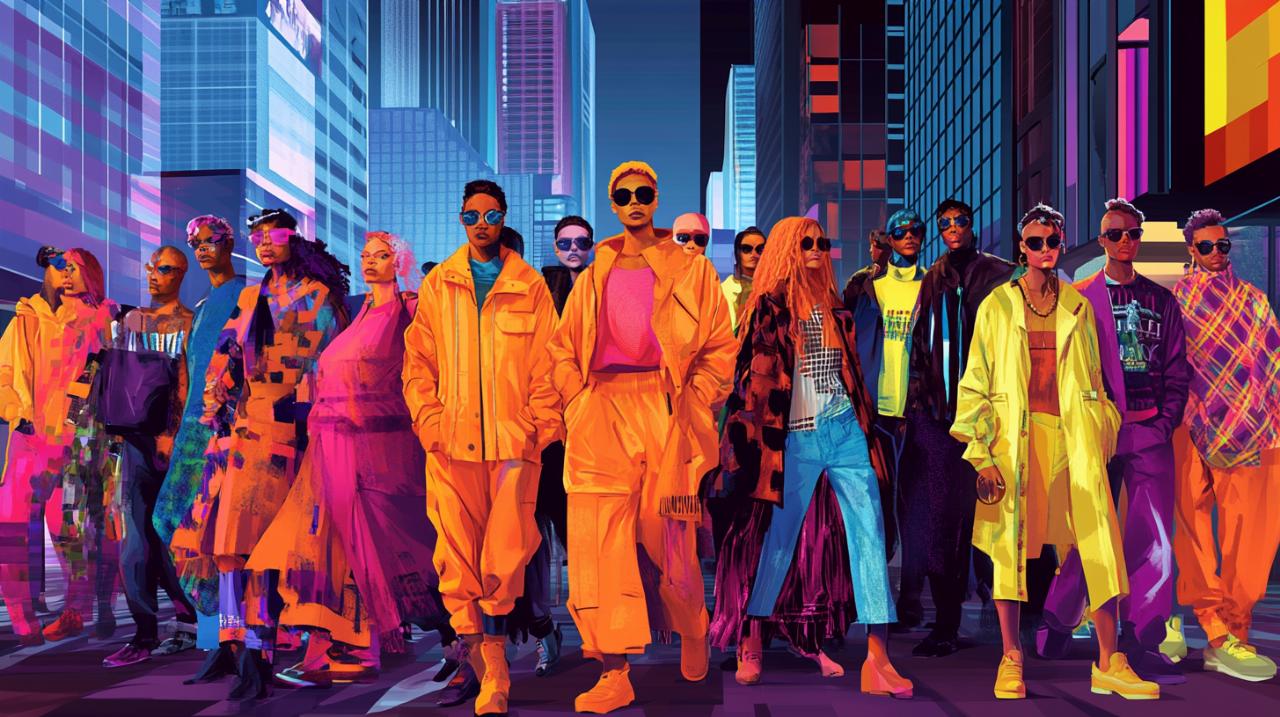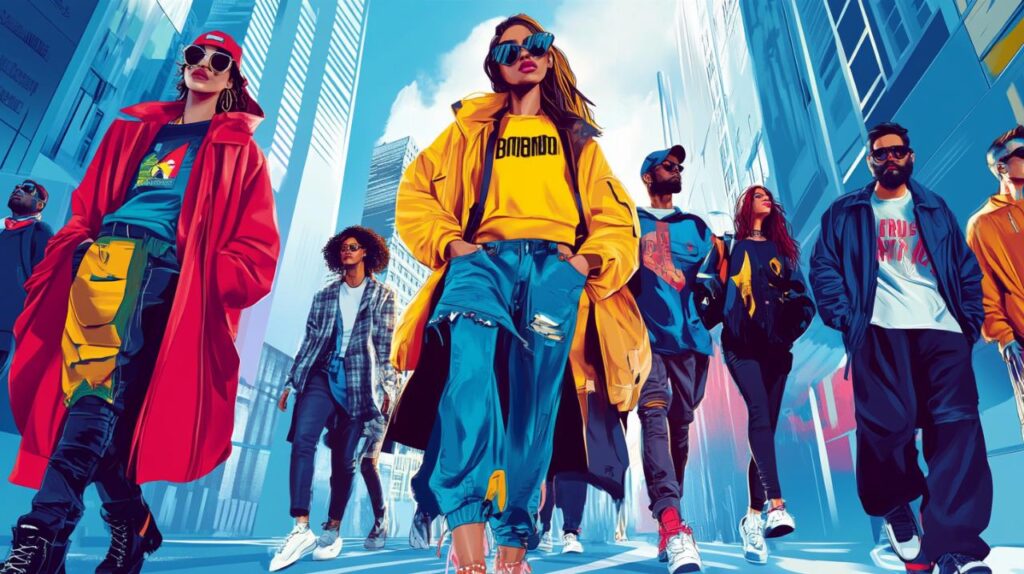The streets of London and cities across the globe have become more than mere thoroughfares for commuters. They pulse with a vibrant energy, shaped not only by architecture and commerce but also by the individuals who traverse them daily. Fashion, in this context, is no longer confined to exclusive boutiques or runway shows. It spills onto the pavements, transforming every high street into a living, breathing gallery where personal style and urban culture collide. This phenomenon has given rise to a fascinating interplay between what people wear and the spaces they inhabit, turning the mundane act of getting dressed into an artistic statement that colours the cityscape.
The Pavement as a Canvas: Street Fashion as Urban Art
Urban fashion has always drawn inspiration from the raw, unpolished aesthetic of the street art movement, which began as graffiti in cities like New York, Los Angeles, and Philadelphia during the 1960s and 1970s. What started as a form of rebellion and social commentary by marginalised communities has since evolved into a globally recognised art form. Artists such as Jean-Michel Basquiat and Keith Haring played pivotal roles in shifting public perception, elevating graffiti from an act of vandalism to a legitimate and celebrated mode of artistic expression. Today, street art encompasses a diverse range of styles, from bold graffiti lines and vibrant colours to intricate stencils, sweeping murals, and even three-dimensional optical illusions that invite passersby to interact with their surroundings. This rich visual language has seeped into the world of fashion, where designers and everyday folk alike incorporate its dynamism and colour into their wardrobes. Brands such as Supreme and Stussy have long embraced street art aesthetics, using their clothing as canvases for social statements and urban narratives. Even luxury labels like Louis Vuitton and Gucci have collaborated with street artists, bridging the gap between high fashion and the gritty authenticity of the streets. Retailers such as Zara and H&M have also adopted this approach, using street art to make their shops more engaging and visually stimulating. These collaborations reflect a broader cultural shift in which the boundaries between art, fashion, and public space have become increasingly fluid. Platforms like tmart.es, which explore the intersection of philosophy and contemporary culture, highlight how these creative expressions challenge traditional notions of what constitutes art and where it belongs. The result is a cityscape that feels alive with possibility, where every corner offers a new visual surprise.
From Practical Attire to Visual Expression in City Centres
The transformation of fashion from purely functional clothing to a medium of visual expression has been gradual but profound. In earlier eras, attire was largely dictated by practicality and social conventions, with little room for individual creativity. However, as urban centres grew and became melting pots of diverse cultures and ideas, fashion began to reflect the complexity and vibrancy of city life. The street art movement, with its emphasis on bold colours, patterns, and messages, has played a significant role in this shift. Graphic tees, for instance, have become ubiquitous, serving as both fashion statements and canvases for social commentary. These garments often feature designs inspired by graffiti, stencils, and murals, allowing wearers to carry a piece of urban art with them wherever they go. This trend is particularly popular among students on university campuses, where the DIY ethos of street art encourages customisation and personal expression. Many young people tailor their clobber by adding patches, embroidery, or hand-painted designs, creating one-of-a-kind pieces that reflect their identities and beliefs. The influence of street performers, with their theatrical and eclectic outfits, further enriches this landscape, adding layers of creativity and spontaneity to the urban fashion scene. This democratisation of style means that anyone, regardless of background or budget, can participate in the visual narrative of the city. The streets become a stage where individual expression is celebrated, and where the line between observer and performer blurs.
How everyday clobber creates spontaneous galleries across london
London, with its rich cultural heritage and cosmopolitan character, offers a particularly striking example of how everyday fashion transforms urban spaces. From the bustling markets of Camden to the sleek boutiques of Mayfair, the city is a patchwork of styles and influences. Street fashion here is not just about following trends; it is about creating them, often in defiance of traditional norms. The ephemeral nature of street art, which can be erased by weather or urban development, mirrors the transient yet impactful quality of fashion itself. A striking outfit worn on the Tube or in Covent Garden can leave a lasting impression, much like a mural glimpsed on a wall. This spontaneity is what makes the streets of London feel like an ever-changing gallery, where the exhibits are as diverse as the people who inhabit them. The incorporation of eco-friendly materials into fashion, driven by a growing awareness of sustainability, adds another dimension to this narrative. Many designers and consumers are now seeking ways to reduce their environmental footprint, choosing garments made from recycled or organic fabrics. This shift aligns with the social consciousness often expressed in street art, which frequently addresses issues such as inequality, environmental degradation, and social justice. Brands like Adidas have collaborated with artists such as Hattie Stewart and Pharrell Williams to create collections that are both stylish and socially responsible. These efforts reflect a broader movement towards a more thoughtful and inclusive approach to fashion, one that recognises the power of clothing to convey messages and spark conversations. The result is a cityscape that is not only visually stimulating but also intellectually and emotionally engaging.
Personal Style as Performance: The Theatre of Daily Dress
 Fashion, at its core, is a form of communication. Every choice we make about what to wear sends a message to the world, whether intentional or not. In the context of urban life, where public spaces serve as stages for daily interactions, dressing becomes a performance. This idea is particularly resonant in cities like London, where the sheer diversity of the population means that no two performances are quite the same. Street fashion, with its roots in the rebellious and expressive ethos of the street art movement, amplifies this sense of theatre. Oversized hoodies, crop tops, co-ord sets, and graphic tees are not just garments; they are props in a larger narrative about identity, belonging, and resistance. The influence of artists like Banksy, known for his politically charged and satirical work, and Shepard Fairey, famous for the ‘Obey’ campaign and the ‘Hope’ poster, can be seen in the bold statements made by contemporary fashion. These artists challenged societal norms and encouraged viewers to question the status quo, a sentiment that resonates deeply with those who use fashion as a form of protest or self-assertion. The rise of social media has further amplified this performative aspect, allowing individuals to share their style with a global audience and to draw inspiration from trends emerging in cities around the world. Platforms like Instagram and TikTok have become virtual galleries where street-inspired fashion is celebrated and disseminated, creating a feedback loop that continuously shapes and reshapes urban style.
Fashion, at its core, is a form of communication. Every choice we make about what to wear sends a message to the world, whether intentional or not. In the context of urban life, where public spaces serve as stages for daily interactions, dressing becomes a performance. This idea is particularly resonant in cities like London, where the sheer diversity of the population means that no two performances are quite the same. Street fashion, with its roots in the rebellious and expressive ethos of the street art movement, amplifies this sense of theatre. Oversized hoodies, crop tops, co-ord sets, and graphic tees are not just garments; they are props in a larger narrative about identity, belonging, and resistance. The influence of artists like Banksy, known for his politically charged and satirical work, and Shepard Fairey, famous for the ‘Obey’ campaign and the ‘Hope’ poster, can be seen in the bold statements made by contemporary fashion. These artists challenged societal norms and encouraged viewers to question the status quo, a sentiment that resonates deeply with those who use fashion as a form of protest or self-assertion. The rise of social media has further amplified this performative aspect, allowing individuals to share their style with a global audience and to draw inspiration from trends emerging in cities around the world. Platforms like Instagram and TikTok have become virtual galleries where street-inspired fashion is celebrated and disseminated, creating a feedback loop that continuously shapes and reshapes urban style.
Individual Expression Through Fashion Choices on the High Street
The high street, once dominated by mass-produced fashion and homogeneous trends, has become a hotbed of individual expression. This shift is partly due to the influence of street art, which has always championed the idea that anyone can be an artist. In fashion, this translates to a democratisation of style, where people feel empowered to experiment with their wardrobes and to push boundaries. The DIY ethos that characterises both street art and contemporary fashion encourages customisation and personalisation, allowing individuals to create looks that are uniquely their own. This is particularly evident in the popularity of graphic tees, which serve as blank canvases for personal and political messages. Whether adorned with bold typography, abstract designs, or reproductions of iconic artworks, these garments enable wearers to express their values and affiliations without uttering a word. The trend towards oversized clothing, including shirts, hoodies, and bottoms, further reflects a desire for comfort and individuality, rejecting the restrictive norms of traditional fashion in favour of a more relaxed and inclusive aesthetic. This movement is not just about aesthetics; it is about reclaiming agency and asserting one’s identity in a world that often seeks to categorise and constrain. The streets become a space where this assertion is not only possible but celebrated, creating a sense of community among those who share similar values and sensibilities.
The Role of Public Spaces in Showcasing Creative Self-Presentation
Public spaces, from bustling city squares to quiet residential streets, play a crucial role in the performance of personal style. These spaces serve as stages where individuals can showcase their creativity and where fashion becomes a shared cultural experience. The influence of street art is particularly evident in the way people use clothing to engage with their surroundings. Just as murals and graffiti transform blank walls into vibrant focal points, so too does fashion transform the human body into a canvas for artistic expression. This interplay between the individual and the environment creates a dynamic and ever-evolving urban landscape, one that reflects the diversity and vitality of its inhabitants. Street art festivals, such as POW! WOW! in Hawaii and Nuart Festival in Norway, have demonstrated the power of public art to bring communities together and to transform urban spaces. Similarly, fashion events and street style photography celebrate the creativity of everyday people, elevating the act of getting dressed to an art form. The ephemeral nature of both street art and fashion adds to their allure. A striking outfit, like a piece of street art, exists in a specific moment and place, making it all the more precious and impactful. This transience encourages a sense of spontaneity and playfulness, inviting individuals to take risks and to embrace the unexpected. The streets, in this sense, become a laboratory for experimentation, where new ideas are tested and where boundaries are pushed. The role of public spaces in showcasing creative self-presentation cannot be overstated. They provide a platform for dialogue and exchange, fostering a sense of connection and belonging that is essential to urban life. As fashion continues to evolve and to draw inspiration from the street art movement, the relationship between personal style and public space will only deepen, creating a richer and more vibrant cultural landscape for all to enjoy.

